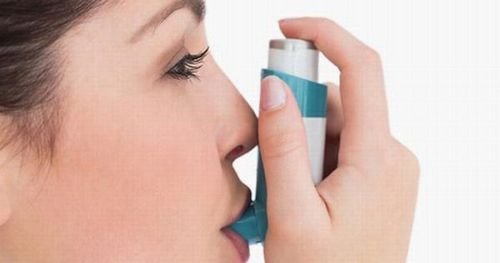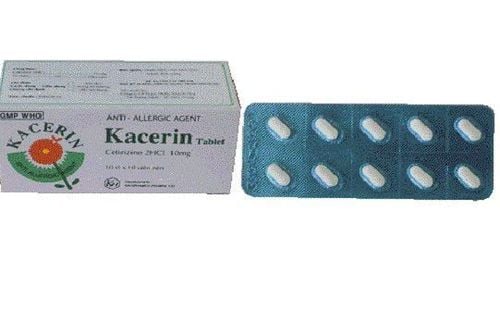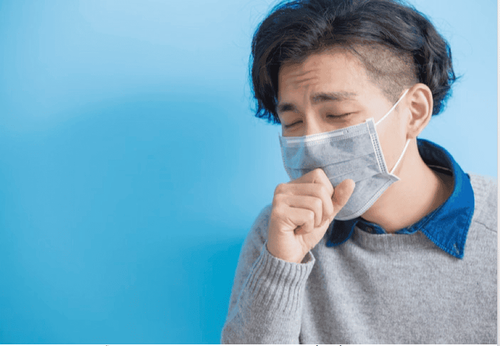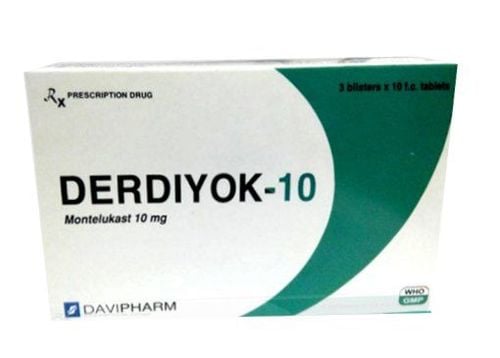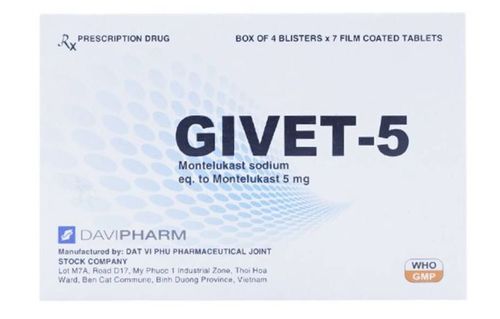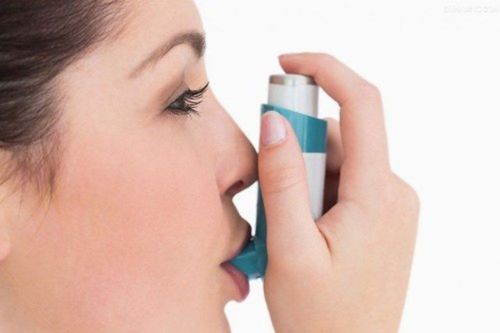This is an automatically translated article.
This article is expertly consulted by Master, Doctor Nguyen Le Duc Hoang - Emergency Medicine Doctor - Emergency Department - Vinmec Danang International Hospital.Asthma relievers and preventatives are two familiar concepts in the treatment of asthma. Typical symptoms of the disease such as shortness of breath, wheezing, cough and chest tightness will improve immediately with asthma relievers. However, even in the absence of any symptoms, treatment with asthma prophylaxis is still essential.
1. What is Asthma?
Asthma or bronchial asthma is a chronic disease that causes inflammation of the airways, causing constriction and mucus secretion reactions.In asthmatic patients, the bronchial tree system is more easily inflamed and sensitive than usual. Patients are prone to shortness of breath due to airflow obstruction or bronchospasm and causing coughing, wheezing, and chest tightness.
2. Overview of Asthma Treatment
There are many different types of asthma medications. However, the treatment of asthma is generally based on two important goals:Specific regimen to treat acute asthma attacks by bronchodilating and anti-inflammatory, avoiding complications leading to respiratory failure acute absorption. Precautionary measures to avoid the frequency of acute attacks and to minimize their severity. To achieve these goals, asthma treatment requires a combination of reliever, prophylactic and lifestyle advice, and identification and prevention of asthma triggers. potential asthma.

3. What are asthma relievers?
The most commonly used asthma relievers are beta 2 agonists, which are quick-onset, providing quick relief from the symptoms of an asthma attack. All people with asthma should be encouraged to carry their asthma relievers with them at all times. However, relievers should be used only when needed to relieve symptoms and at the lowest dose and frequency needed. Therefore, the drug of choice should be short-acting inhaled beta 2 agonists and are generally available from pharmacies without a prescription.Asthma relievers work by rapidly dilating the bronchi by relaxing the sphincter muscles around the airways and improving airflow. Thereby, the patient will feel less shortness of breath, wheezing.
Despite this, excessive use of asthma relievers has been identified as one of the risk factors for exacerbation of the disease and indicates poor control of the disease. When high doses are needed, at intervals of less than 4 hours or more twice weekly or once a night each week, the patient should be evaluated by a specialist. Also, when assessed for poor asthma control, patients may need additional topical and/or systemic corticosteroids. On the other hand, heavy use of asthma relievers may also reflect other diagnoses such as anxiety or dyspnea and these will need to be managed more appropriately.
The short acting beta 2 agonists used as asthma relievers are salbutamol and terbutaline. In addition, long-acting but rapid-onset beta-2-agonists are also used for relief, such as eformoterol, which can be combined with budesonide.
4. What is asthma prophylaxis?

Mechanism of asthma prophylaxis with inhaled corticosteroids with a local anti-inflammatory mechanism in the airways. Thereby, the irritation of the bronchial tree system will be inhibited, minimizing the occurrence of inflammatory reactions and causing spasms and increased secretions when exposed to stimulating factors from the outside.
However, in people with severe asthma, the ability of inhaled corticosteroids as asthma prophylaxis may be limited. At this point, an additional approach may be to maintain low-dose oral corticosteroids and adjust the dose according to the likelihood of a long-term response. However, the use of systemic corticosteroids is associated with a number of significant side effects. However, if inhaled corticosteroids are used, patients should also pay attention to rinsing their mouth with clean water after inhaling the drug to remove excess medication deposited in the mouth and throat to limit local side effects.
Inhaled corticosteroids used as asthma prophylaxis are beclomethasone, budesonide, ciclesonide, fluticasone. In addition, there are inhaled corticosteroids in combination with long-acting beta-agonists such as budesonide/eformoterol, fluticasone/vilanterol, fluticasone/eformoterol, flucticasone/salmeterol. Certain inhaled long-acting beta-agonists are also used as asthma prophylactics, such as eformoterol, salmeterol xinafoate, but should never be used as monotherapy and may be used in combination with other asthma medications. It also has the same purpose of preventing attacks.
5. Things to keep in mind when taking asthma medicines
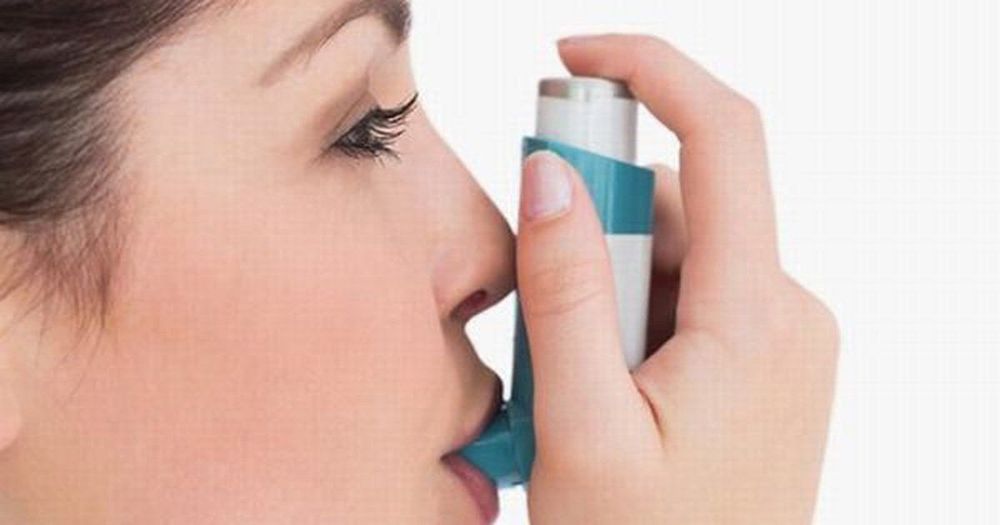
In general, inhaling asthma medications usually cause fewer side effects than taking medicines in the form of tablets. In contrast, in moderate to severe asthma, the consequences if not well controlled will be worse than the potential side effects. Accordingly, understanding the side effects of asthma medications will help better prevent and increase the safety of medication.
Corticosteroids Long-term use of steroids in children can impair a child's growth. However, this can be rare and if it does happen, it is only temporary, while the benefits of medication are valuable when it comes to relieving severe, malignant asthma. Some children may grow a little slower during the first year of treatment but develop normally in the following years when their asthma is stable. At the same time, these children are also likely to grow to the final adult height milestone just like other children. However, for maximum safety, children with asthma should be prescribed the lowest possible dose of steroids and, if possible, only with topical rather than systemic steroids.
On the other hand, corticosteroids can cause coughing and hoarseness as well as increase the risk of fungal infections in the mouth. To prevent these side effects, patients should remember to rinse their mouths after inhaling corticosteroids. In the elderly, corticosteroids may also increase the risk of cataracts.
Beta 2 agonists Long acting beta 2 agonists should always be taken with steroids. If treatment with long-acting beta 2 agonists as asthma prophylaxis alone can lead to life-threatening asthma attacks.
In summary, the treatment of asthma always requires a combination of reliever and preventive medicine. These asthma medicines must always be well understood and available to use as prescribed by a pulmonologist, control both asthma and asthma attacks, and help improve the quality of life for patients.
Respiratory - Allergy and Clinical Immunology Unit at Vinmec Times City International Hospital was established and expanded with the desire to provide professional services with high expertise for medical examination and treatment. respiratory, allergic and autoimmune diseases.
Unit brings together professors, doctors and specialists with more than 30 years of experience, well-trained young doctors in advanced countries who are always ready in the work of examining and taking care of people. sick. In addition, the Unit is equipped with the most modern equipment and machinery in Vietnam to support the diagnosis and treatment of diseases.
Especially, for patients with bronchial asthma, patients are measured FeNO to support early diagnosis of asthma, especially in children. This is an effective monitoring tool for asthma management, treatment, and prognosis of acute asthma attacks (only address in the North). In addition, with the desire to work with you to control asthma, the Asthma Club is opened regularly to supplement knowledge, help patients exchange knowledge with leading experts in Vietnam and the world about asthma. asthma. Currently, the Unit has professional cooperation and scientific research with hospitals and universities in Australia, the United States and France.
Respiratory unit - Clinical immuno-allergy is currently becoming a reliable examination address for many customers because when coming to the clinic, the patient will be examined and thoroughly consulted by the doctor about the disease and treatment plan. Patients are also provided with comprehensive supplemental information about the disease.
Please dial HOTLINE for more information or register for an appointment HERE. Download MyVinmec app to make appointments faster and to manage your bookings easily.





